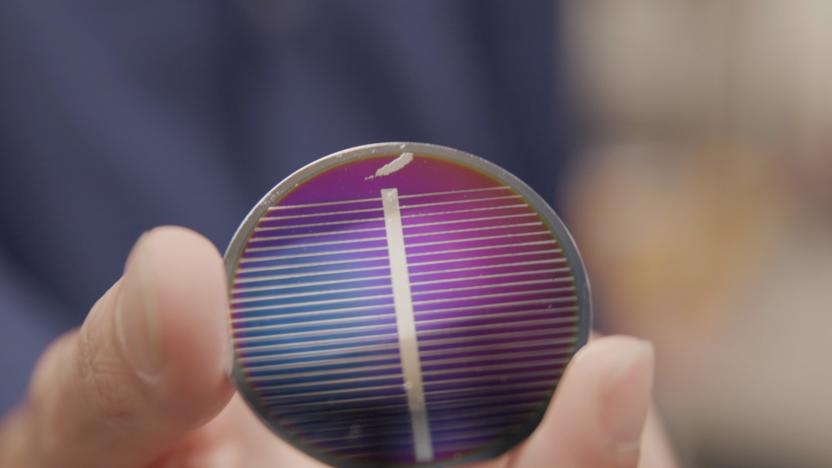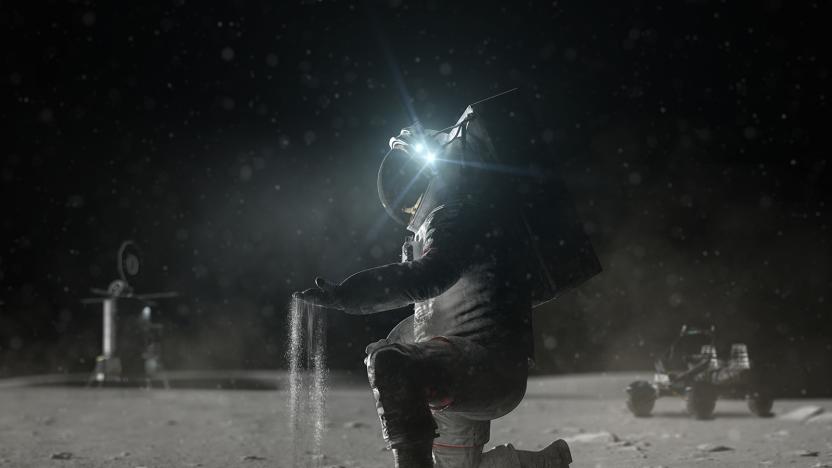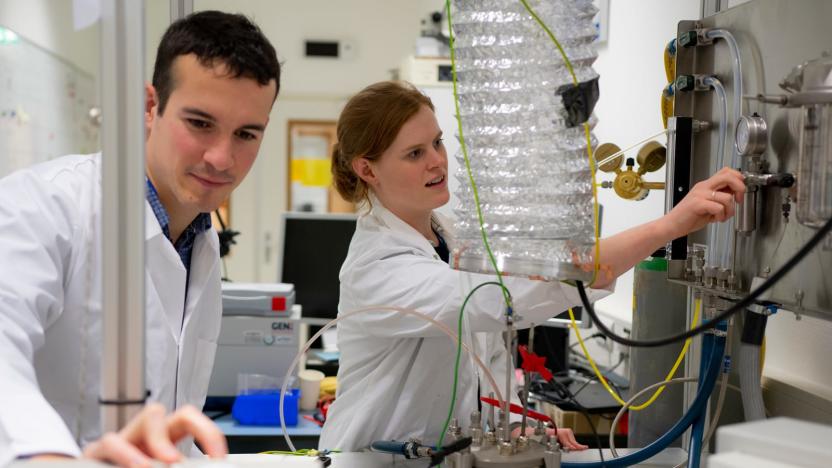regolith
Latest

Blue Origin made solar cells by smelting simulated Moon dust
Blue Origin has made solar cells using lunar soil — a potential boon for future Moon exploration.

NASA contest asks K-12 students to create Moon-digging robots
NASA is running a contest that challenges K-12 students to design a robot that can excavate the Moon.

NASA's latest space station cargo includes a 3D printing system for lunar soil
NASA's newest space station cargo mission has delivered a 3D printer that could help print habitats from Moon and Mars soil.

NASA crowdsourcing helps build a better Moon digging robot
NASA has picked the winners from a challenge that asked the public to improve its Moon digging robot.

ESA opens plant that turns moondust into oxygen
If humans are going to have a long-term presence on the Moon, they're going to need breathable air and rocket fuel -- and the ESA might just have a way to create both using the Moon itself. The agency is running a prototype plant that converts moondust (currently simulated, of course) into oxygen that could be used for air and fuel. The technique unlocks the high amounts of oxygen in regolith using molten salt electrolysis that superheats the dust and migrates the oxygen along the salt until it's collected at an anode. The basic process has already been used for metal and alloy production, but the ESA tweaked it to ensure oxygen was available to measure.

The Big Picture: building a 3D-printed moon base
Did the European Space Agency's concept of a 3D-printed moon base seem too outlandish? Don't worry -- the institution has just posted a video (below) that sheds more light on the subject. The colonization mission would revolve around a robotic rover that converts moon dust into a 3D-printed protective layer for an inflatable habitat; after three months, the living space would be safe enough for human settlers. It'd even have windows to provide some natural lighting. This is just a research exercise at present -- it'll likely be years before the ESA can put a base like this on lunar soil. Still, it's clear that the agency's vision of extraterrestrial colonization is more than just a passing fancy.

WSU can print 3D parts from moon rock to help astronauts in a jam (video)
It was only a matter of time before 3D printers went to other worlds, really. Following a NASA line of questioning, Washington State University has determined that it's possible to print 3D objects from moon rock. Researchers learned that simulated moon material behaves like silica and can be shaped into 3D objects by melting it with a laser, whether it's to form new objects (like the ugly cylinders above) or to patch objects together. Would-be assemblers could also introduce additive materials to vary the composition on demand. No, the results aren't as pretty as certain 3D creations, but they could be vital for future missions to Mars or the Moon: astronauts could fix equipment, or build new parts, without either an elaborate process or waiting for supplies from Earth. Now all we need are the extraterrestrial missions to take advantage of WSU's ideas.
